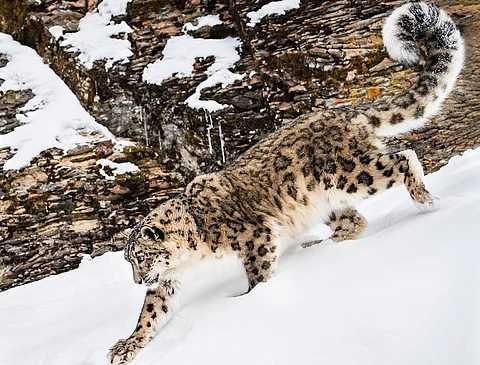

The remote and cold Spiti Valley of Himachal Pradesh is now home to India’s largest conservation reserve. The state government notified the Tsarap Chu Conservation Reserve by issuing a notification on May 7, 2025. The notification has been issued under Section 36A(1) of the Wildlife (Protection) Act, 1972.
Tsarap Chu joins Darlaghat, Naina Devi, Potter Hill, and Shilli as Himachal Pradesh’s fifth conservation reserve. Its geographical spread makes Tsarap Chu extremely important from the point of view of biodiversity and ecology. It is bounded by the Union Territory of Ladakh to the north, the Kibber Wildlife Sanctuary extending up to Malang Nala and Lungar Lungpa to the east, Kabjima Nala to the south and Chandratal Wildlife Sanctuary to the west. It is also the location for the confluence of the Unam River and Charap Nala.
It is one of select areas in Himachal Pradesh with a high density of snow leopards. This area is also the catchment area of the Charap Nala and is an important wildlife corridor connecting the Kibber and Chandratal sanctuaries, which is extremely important for biodiversity.
Mandar Jevare, deputy conservator of forests (DFO), Spiti forest division, told Down To Earth (DTE) that the notification of the Tsarap Chu Conservation Reserve is the result of a long, grassroots process.
“Detailed consultations were done with the local Gram Panchayats, field surveys and previous data were analysed in depth. Declaring this area as a conservation reserve will encourage activities such as wildlife conservation and research, trekking, eco-tourism, and photography, thereby providing a new base for the livelihood of the local communities,” Jevare told DTE.
The Tsarap Chu Conservation Area is particularly known for the snow leopard, often called the ‘ghost of the mountains’. It is a stealthy predator, found in snowy and rocky terrain at an altitude of 3,000 to 5,000 metres. The species is found in relatively high numbers in the Spiti Valley, and its presence reflects the health of the entire ecosystem.
Tibetan wolf, bharal (blue sheep), Himalayan ibex, kiang (wild ass), and the Tibetan argali are also found in the region. Rare bird species such as Rose Finch, Tibetan Raven, and Yellow-billed Chough enrich the ecology of the region. This biodiversity makes the region important not only for national but also international conservation agencies.
The Tsarap Chu Conservation Reserve will be managed through a Conservation Reserve Management Committee, which will also include representatives from local Panchayats. The committee will manage the area while balancing the needs of local communities and wildlife conservation priorities.
Principal Chief Conservator of Forests and Chief Wildlife Warden of Himachal Pradesh, Amitabh Gautam, said, “This notification will give fresh impetus to community-based conservation efforts in the state and make local people active partners in the conservation process.”